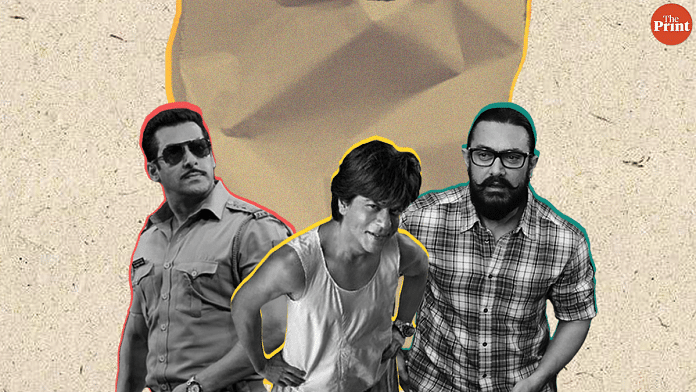
Thank you dear subscribers, we are overwhelmed with your response.
Your Turn is a unique section from ThePrint featuring points of view from its subscribers. If you are a subscriber, have a point of view, please send it to us. If not, do subscribe here: https://theprint.in/
Bollywood or the Mumbai-based Hindi film industry is going through its worst crisis in recent years. One film after another is falling flat despite large-scale publicity campaigns. What is most disconcerting is that beyond the quality of these films, the ideological leanings and political comments made by the actors, directors, and support staff seem to be playing a role in deciding the fate of these films.
Aamir Khan’s ambitious ‘Laal Singh Chaddha’ faced a vitriolic boycott campaign apparently because of a comment the actor made about intolerance in India many years back. On the other side of the ideological divide, the box office failures of actors like Akshay Kumar and Kangana Ranaut were also wildly celebrated by many on social media.
The campaign against Khan only exemplifies what damage unregulated negativity on social media can cause. At the start of the millennium when most lead actors were still beating up goons and running around trees, Aamir Khan made a film like Lagaan. He followed it up with many breakthrough films like Rang De Basanti and Taare Zameen Par. In a democracy, criticism of a public figure is welcome but films should be judged only on their merit. Similarly, the celebrations on social media after Akshay Kumar’s films failed show how he is not being judged for his performances but for his off-screen ideological leanings.
What if tomorrow people stop purchasing a product or service you work for, not because your product is of inferior quality but because your CEO made some comment on Twitter ages back that they didn’t like? Would you consider that fair? I guess not but still, we choose to do the same because the entertainment industry is always a soft target.
However, having said the above, it is also important that now the film industry comes together to find a way out of this crisis. For long, Bollywood has taken the affection of the people for granted, and probably it’s time for a course correction. When cinema reached the Indian shores for the first time, the nation was grappling with many challenges. Due to illiteracy and poverty, literature and theatre, howsoever high in quality and content, remained largely confined to the social elite.
Cinema emerged as a breath of fresh air, which was also affordable for the masses. The content was mostly escapist in nature where the protagonist could be seen bashing up the baddies or standing up against evil moneylenders, scheming politicians or corrupt police officers. After a hard day’s work, a rickshaw puller or a mill employee could spend a few bucks to escape from his daily struggle for a couple of hours.
Even though the industry always remained largely profitable, there was no attempt to connect with the audience. The fraternity lived in its own ivory tower and filmstars waved to crowds from the balconies of their posh bungalows.
The VCR and cable tv era did threaten the hegemony of the film industry as the prime entertainer, but liberalisation of the economy also brought in the multiplexes. The film industry quietly profited as ticket prices were hiked exponentially and cinema watching gradually became unaffordable for the underprivileged. Single screen theatres died a slow death but the film fraternity never showed any concern about the fact that cinema watching was becoming increasingly elitist and a large section of the Indian audience was now not rich enough to go to the theatres.
The penetration of the internet and the proliferation of social media has now yet again changed the dynamics. Thanks to cheap data and the popularity of OTT, people, across economic divides, have many other options for entertainment.
For a long time, people could watch the actors on screen but could not know what happened behind the cameras. Filmy gossip remained confined to film magazines. Suddenly, with social media, the hitherto inaccessible lives of the film fraternity became public.
So, now we have a situation, where on one hand the viewer is spoilt for choices as far as the modes of entertainment are concerned, on the other, the lives of the actors, and their opinions are in the public domain making them more vulnerable than ever before. The film industry will have to recognize these changing dynamics and recalibrate its strategies.
For a start, they must focus more on delivering quality content. Films like Laal Singh Chaddha & Liger were panned by the critics as well. Secondly, the film fraternity should stop criticizing each other in public and present a united picture. This will help in reducing the polarisation among the audiences as well.
Not many years ago, Kangana Ranaut, and Swara Bhaskar came together to deliver a film like ‘Tanu Weds Manu’. If such a star cast could work together in 2011, why can’t the same be done today?
These pieces are being published as they have been received – they have not been edited/fact-checked by ThePrint.


COMMENTS